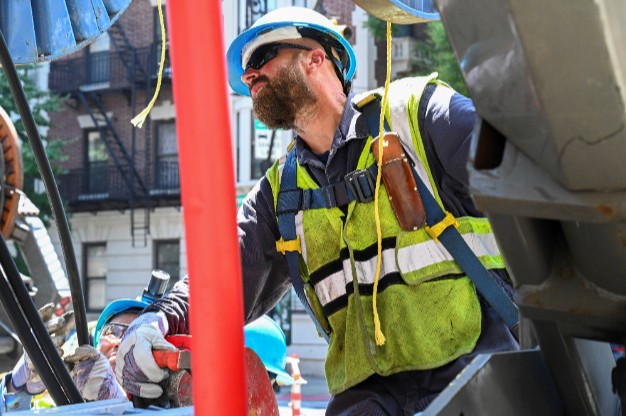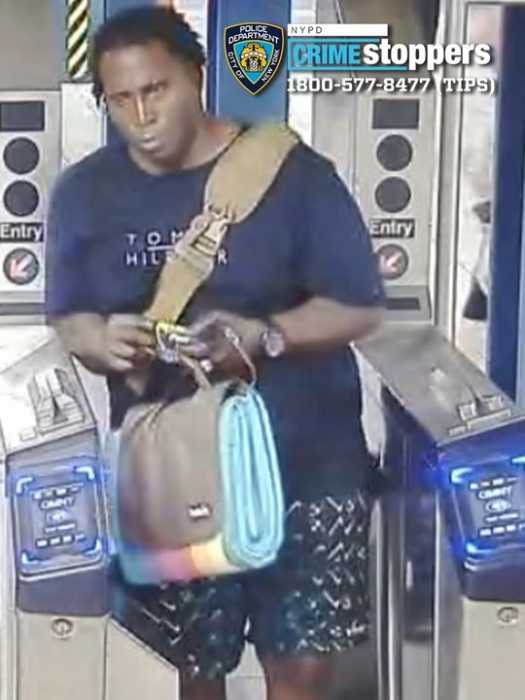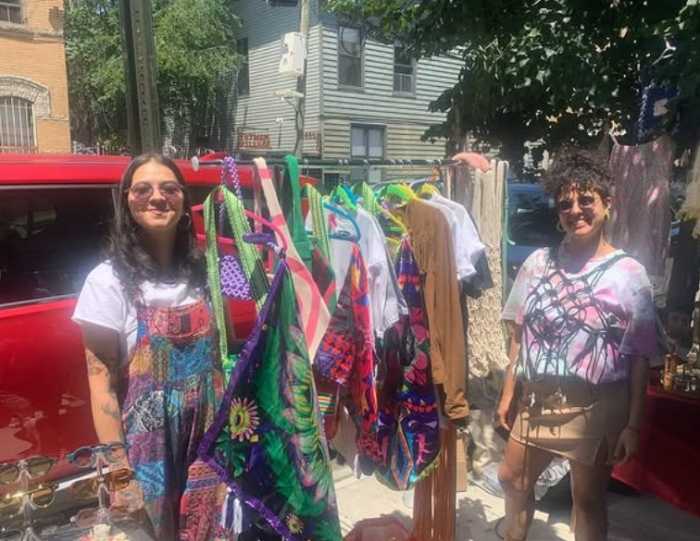By The Times-Ledger
Oh, the helplessness of the professionals, and the creative joy of the independent film artist, roaming the streets of New York, free, with his 16 mm camera, on the Bowery, in Harlem, in Times Square, and in Lower East Side apartments – the new American film poet, not giving a damn about Hollywood, art, critics, or anybody.
– Jonas Mekas in The Village Voice, Jan. 12, 1961
The 1960s has left an indelible mark on U.S. history – hippies, Vietnam, love-ins, happenings, marches on Washington, assassinations, “Laugh-in,” The Smothers Brothers.
Amid all this, New York City was home to a vibrant underground film movement that rejected Hollywood in favor of personal, idiosyncratic movies that were as eclectic and varied as the city itself.
The American Museum of the Moving image explores this movement in a series running through Dec. 3, “Visions of New York: Films from the 1960s Underground,” with screenings of more than 50 films and personal appearances by such key figures as Jonas Mekas, Ken Jacobs, Alfred Leslie, and P. Adams Sitney.
“In addition to exploring the work of such great film artists as Emie Gehr, Ken Jacobs, Jack Smith, Andy Warhol, and many more, this series is also, quite literally, a portrait of New York City in the 1960s,” said David Schwartz, the museum's chief curator of film. “Cinema, after all, is an art form rooted in photographic reality, so it makes perfect sense that the films of the New York underground provide, among their artistic breakthroughs and triumphs, a vibrant record of what life felt and looked like in this city in the 1960s.”
Ken Jacobs reveled in the bohemian splendor of Lower East Side tenement flats and rooftops to create “Little Stabs at Happiness” and Blonde Cobra. George and Mike Kuchar made the Bronx a cinematic wonderland, creating tawdry and hilarious versions of the Hollywood spectacles they watched as teenagers in the 1950s at the Loew's Paradise. Working with the open-eyed curiosity of the Lumiere brothers, Andy Warhol turned his impassive lens on the Empire State Building, and let the camera roll for eight hours.
Among the highlights of Visions of New York are:
* A weekend (Dec. 2 and 3) featuring rare double-projector screenings of split-screen films by Andy Warhol, including his masterpiece, “The Chelsea Girls,” as well as “The Velvet Underground” and “Outer and Inner Space” (which stars Edie Sedgwick on film confronting her own image on a TV monitor).
* An afternoon with Ken Jacobs (Nov. 18), one of New York City's most accomplished and important avant-garde film artist. Jacobs will present a selection of films which prominently feature the New York cityscape, including “Little Stabs at Happiness,” “The Sky Socialist,” and Baud'Larian Capers.”
* A personal appearance by Jonas Mekas (Nov. 26), a central figure in the New York avant-garde as a critic, filmmaker, founder of Anthology Film Archives, and all-around champion of the movement. Mekas will present his feature film, “Guns of the Trees.”
* A day of avant-garde comedy (Nov. 25), featuring the no-budget Bronx-made comedies of George and Mike Kuchar, including “Sins of the Fleshapoids” and “Hold Me While I'm Naked,” and films by Robert Downey and the late Paul Bartel.
In addition to such classics as “Scorpio Rising,” “Wavelength Empire,” “Flaming Creatures,” and “Blonde Cobra,” the series has films that have rarely been shown since the 1960s, including “The Flaming City,” a feature-length film by artist Dick Higgins (Nov. 11), and a program of rarities from the shelves of the Filmmakers' Cooperative, the main distribution center for New York's avant-garde filmmakers.
The Film-Makers' Cooperative was founded in 1962, and would distribute for any filmmaker who submitted a print. The co-op was part of a lively film culture that thrived during the '60s.
Formal and informal venues emerged around the city, offering a movable cinematic feast to an adventurous and sizable audience. The Charles Theater on Avenue B and East 12th Street presented open house screenings from 1961 to 1963. The Bleecker Street Cinema briefly attempted to cash in on the scene with midnight screenings in 1963 – including the legendary double-feature premiere of “Blonde Cobra” and “Flaming Creatures.”
Ken Jacobs organized screenings in his lower-Manhattan loft; it was here that the Kuchar brothers first showed their 8 mm comedies.
The spontaneity and rebellious nature of underground film echoed the beatnik writing of Allen Ginsberg and Jack Kerouac; the painting of Jasper Johns, Robert Rauschenberg, and Andy Warhol; the music of John Cage; and the live performances of the Living Theater, Yvonne Rainer, and Trisha Brown, to name just a few. When Warhol released “The Chelsea Girls” in 1966, it became a commercial success, quickly moving from a run at the Filmmakers Cinematheque on West 41st Street to a 57th Street art house, where it played for months.
The underground also benefited from controversy and scandal. The sexually outlandish and explicit “Flaming Creatures” was banned by the City of New York, which was trying to clean up its public image.
The notoriety and attention that gave the New York film underground a rare moment of impact and exposure have long faded, replaced by an independent film scene today that is deeply intermeshed with the mainstream.
The city, too, has changed, becoming more commercial. So in a way, this retrospective is as much a portrait of a New York of another era, as it is a survey of a film movement that was truly independent.


































